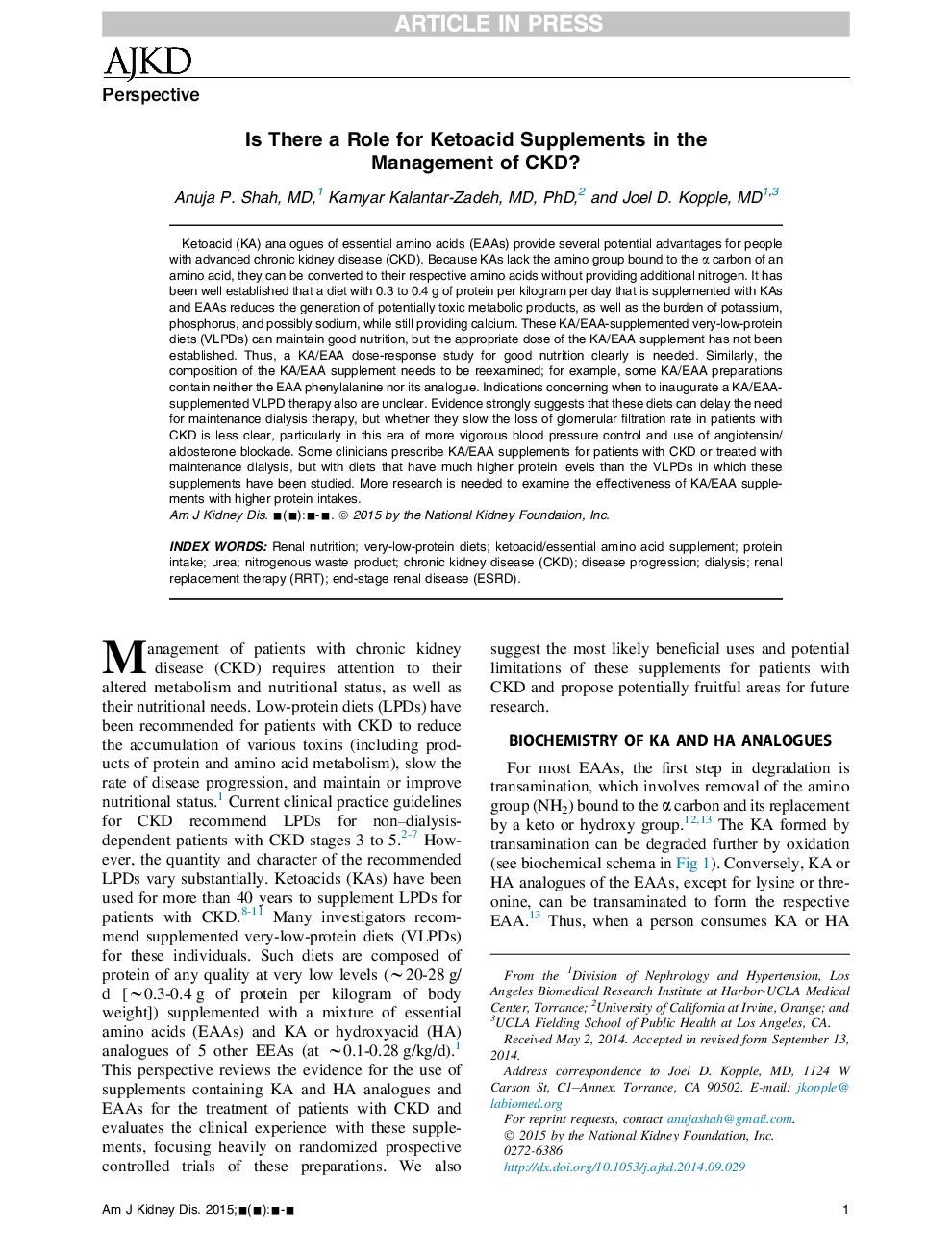| Article ID | Journal | Published Year | Pages | File Type |
|---|---|---|---|---|
| 6157185 | American Journal of Kidney Diseases | 2015 | 15 Pages |
Abstract
Ketoacid (KA) analogues of essential amino acids (EAAs) provide several potential advantages for people with advanced chronic kidney disease (CKD). Because KAs lack the amino group bound to the α carbon of an amino acid, they can be converted to their respective amino acids without providing additional nitrogen. It has been well established that a diet with 0.3 to 0.4 g of protein per kilogram per day that is supplemented with KAs and EAAs reduces the generation of potentially toxic metabolic products, as well as the burden of potassium, phosphorus, and possibly sodium, while still providing calcium. These KA/EAA-supplemented very-low-protein diets (VLPDs) can maintain good nutrition, but the appropriate dose of the KA/EAA supplement has not been established. Thus, a KA/EAA dose-response study for good nutrition clearly is needed. Similarly, the composition of the KA/EAA supplement needs to be reexamined; for example, some KA/EAA preparations contain neither the EAA phenylalanine nor its analogue. Indications concerning when to inaugurate a KA/EAA-supplemented VLPD therapy also are unclear. Evidence strongly suggests that these diets can delay the need for maintenance dialysis therapy, but whether they slow the loss of glomerular filtration rate in patients with CKD is less clear, particularly in this era of more vigorous blood pressure control and use of angiotensin/aldosterone blockade. Some clinicians prescribe KA/EAA supplements for patients with CKD or treated with maintenance dialysis, but with diets that have much higher protein levels than the VLPDs in which these supplements have been studied. More research is needed to examine the effectiveness of KA/EAA supplements with higher protein intakes.
Keywords
Related Topics
Health Sciences
Medicine and Dentistry
Nephrology
Authors
Anuja P. MD, Kamyar MD, PhD, Joel D. MD,
